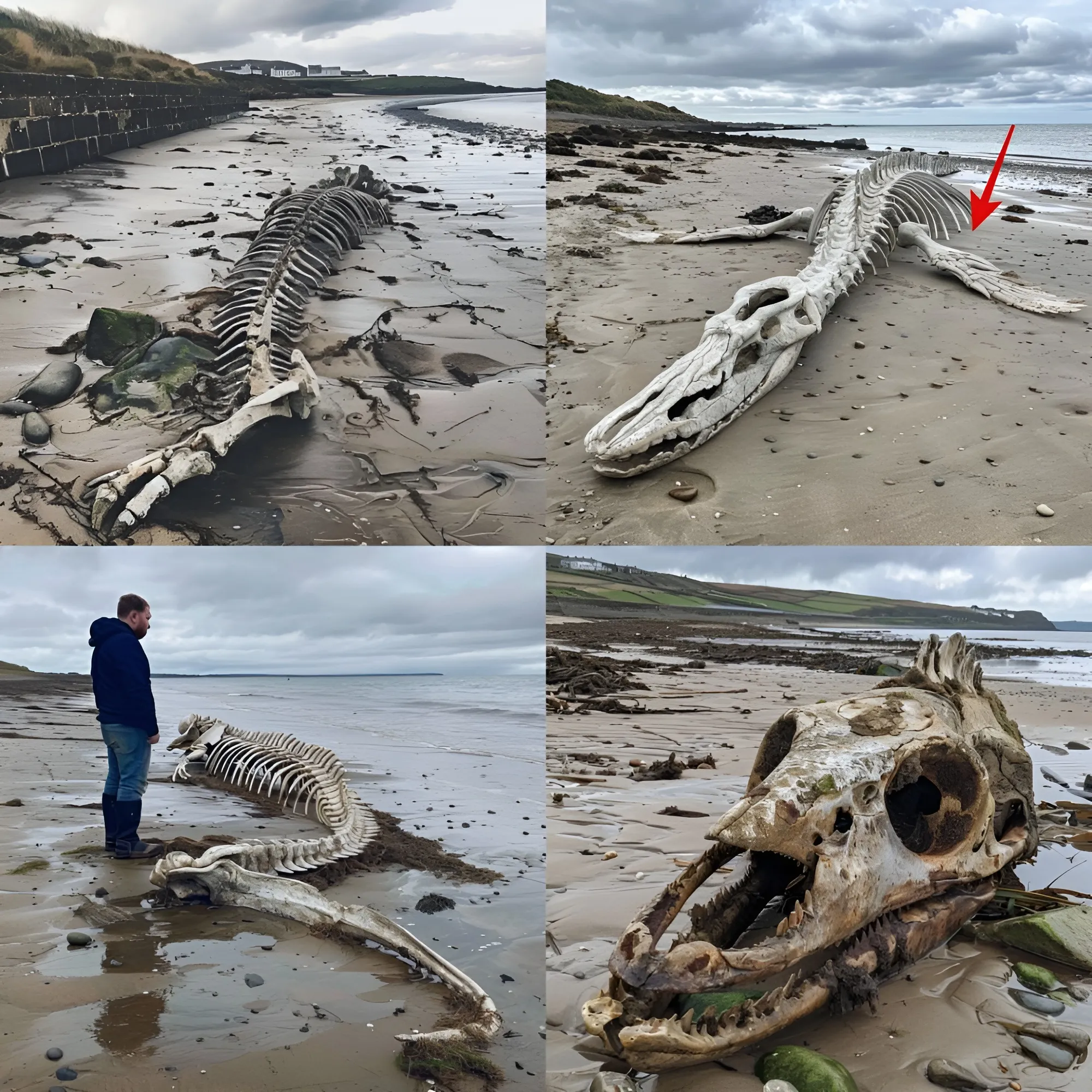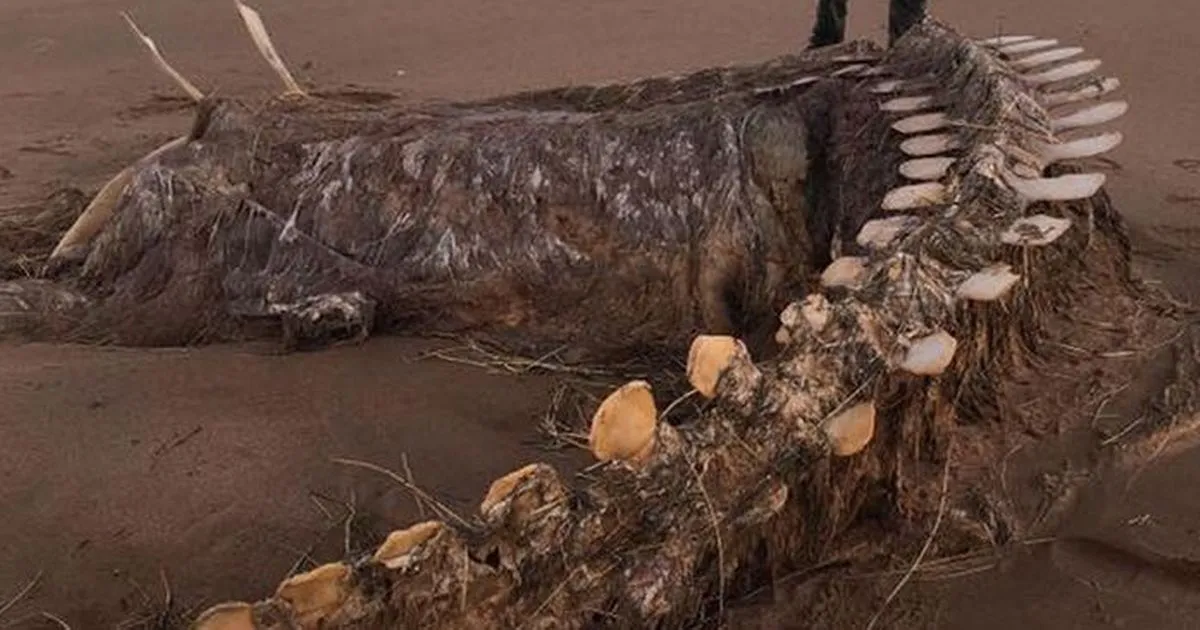In a startling discovery that has left locals and marine experts baffled, a mysterious sea creature’s skeleton washed ashore on a Scottish beach in the aftermath of Storm Ciara. The powerful storm, which unleashed severe weather across the United Kingdom, brought with it not only gale-force winds and torrential rain but also unearthed an astonishing and cryptic find from the depths of the ocean.

The skeletal remains, measuring several meters in length, were found tangled in seaweed and debris on the remote coastline. The creature’s structure is unlike anything seen in the region before, with elongated vertebrae and what appear to be remnants of fins or flippers. The bones, partially buried in the sand, have an eerie, almost prehistoric appearance, sparking immediate speculation among locals and prompting a wave of excitement and concern.
Witnesses who stumbled upon the skeleton described it as both fascinating and unsettling. “It’s like nothing I’ve ever seen,” remarked one local resident. “At first, we thought it might be a whale or a large fish, but the shape and size are all wrong.” The discovery quickly attracted onlookers and amateur photographers, with social media buzzing with images and theories about the creature’s origins.
Marine biologists and experts have been called to the scene to examine the remains, but initial assessments have yet to provide a definitive identification. Some scientists suggest that the skeleton could belong to a deep-sea creature rarely seen by humans, possibly brought to the surface by the violent force of the storm. The possibility of it being a species yet to be documented has stirred excitement in the scientific community, with researchers eager to study the remains further.
Other theories range from the plausible to the fantastic. Some locals speculate that the skeleton might be evidence of a surviving prehistoric marine animal, reminiscent of creatures like the plesiosaurs that roamed the oceans millions of years ago. Cryptozoologists, those who study creatures from folklore and legend, have also taken an interest, proposing that the find could be linked to myths of sea monsters that have long been part of Scottish maritime lore.
Despite the wild speculations, more grounded explanations are also being considered. The skeleton might be that of a known marine animal such as a large shark, dolphin, or whale, with the bones’ unusual appearance resulting from natural decomposition processes or damage caused by the storm’s intense conditions. However, the current state of the remains has left even experienced marine biologists puzzled, as certain features do not align neatly with any known species in the area.
Authorities have cordoned off the site to preserve the skeleton for a thorough scientific investigation. Samples are being collected for analysis, which will involve DNA testing and radiocarbon dating to determine the creature’s species and its age. The hope is that these tests will reveal whether this is indeed a case of a rarely seen or entirely unknown marine animal.
As the scientific community eagerly awaits the results of these investigations, the mysterious sea creature’s skeleton has reignited public fascination with the ocean’s unexplored depths. Storm Ciara may have left a path of destruction in its wake, but it also appears to have uncovered a relic from the sea that challenges our understanding of marine life. Whether the skeleton belongs to a known deep-sea dweller or something more enigmatic, this shocking find serves as a reminder of the mysteries that lie hidden beneath the ocean’s surface.





